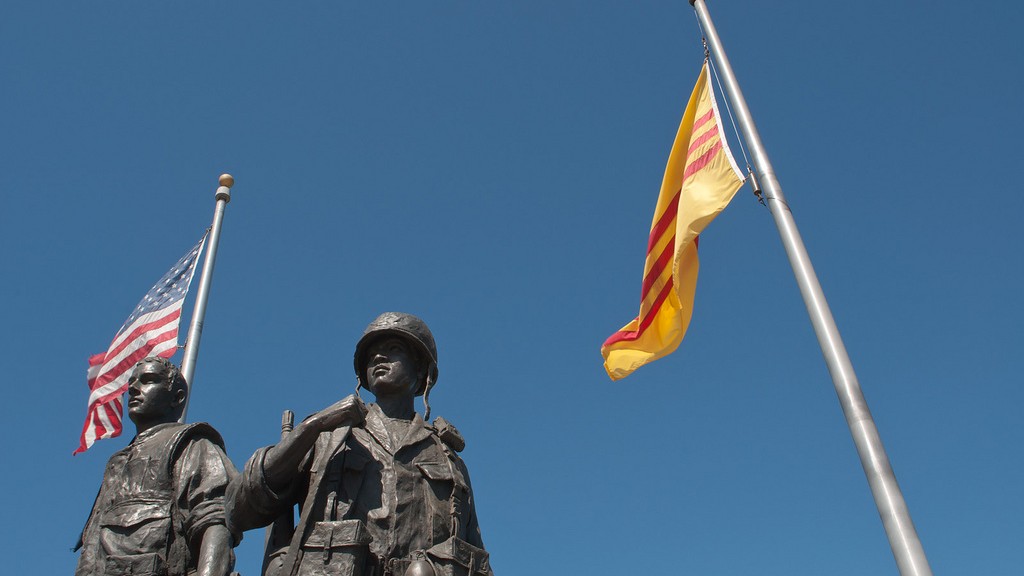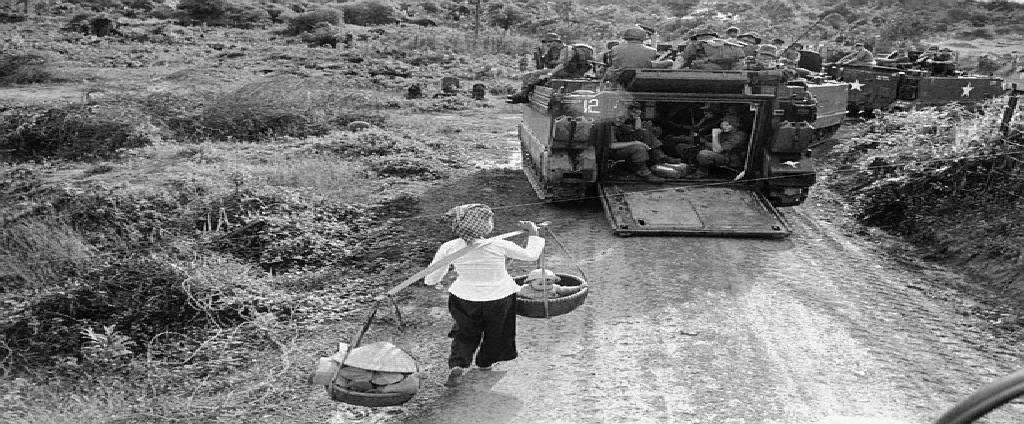In part one of What Countries Involved in the Vietnam War, we look at the number of nations who involved and supported North and South Vietnam in the entire ten thousand day war in Vietnam from 1945 to 1975. We also discuss the Communist allies’ support especially the vital contributions of the Soviet and Chinese to North Vietnamese Communists.
In part two of What Countries Involved in the Vietnam War, we are going to explore the involvement of anti-communist side in the conflict – how the Free World nations under the leadership of the United States helped its ally in its war against communism.
Johnson’s “More Flags”
American active interest in bringing its allies in Asia and the Pacific into the Vietnam conflict had been part of U.S. policy as early as 1961. This was first publicly embodied by President Johnson’s call for “more flags” in Vietnam on April 23, 1964. Johnson hoped to enlist its allies to send military aid and troops to support American cause in South Vietnam. Military and economic aid aside, the program also served as a “visible symbol” of Free World support for his efforts against communism during the Cold War in general and his policies in Vietnam in particular. In response to Johnson’s appeal, 5 countries, viz. Australia, New Zealand, Republic of Korea, Thailand, and the Philippines, contributed troops. In addition, 38 nations sent further aid and assistance to the South Vietnam.
New Zealand
Along with Australia, New Zealand was a close ally of the U.S. as they were members of Southeast Asia Treaty Organization (SEATO) and Australia, New Zealand, United States Security Treaty (ANZUS). Under Cold War concern, communist spread and alliance obligations, New Zealand also sent its ground troops into Vietnam together with its allies.
However, unlike the U.S. and Australia, New Zealand was rather reluctant to commit its troops to South Vietnam partially due to its military commitment in the Indonesia-Malaysian Confrontation during 1963-1966. Instead, in April 1963, New Zealand confined its commitment to a civilian surgical team which comprised of 7 men and later extended to 16 men who would stay until the end of the Vietnam War in 1975.
Under U.S. continued pressure, New Zealand eventually sent in a detachment of 25 engineers the New Zealand Army Detachment Vietnam (NEWZAD) in June 1964. They engaged in reconstruction projects in Binh Duong until being replaced by 161 Battery, Royal New Zealand Artillery (RNZA) in July 1965. The 161 Battery involved in a number of key battles such as Battle of Long Tan in 1966 and Tet Offensive in 1968 until being withdrawn in May 1971.
New Zealand continued to send its Services Medical Teams (NZSMT), Royal New Zealand Air Force (RNZAF), along with regular infantry to South Vietnam, which were attached to Australian formation. Most of New Zealand forces were stationed at Nui Dat in Phuoc Tuy Province to support the 1st Australian Task Force. Their operations were mainly cordon and search. New Zealand troops in Vietnam peaked at 548 men with the arrival of Special Air Service troops in November 1968 .
Since 1971, as part of US President Nixon’s Vietnamization, New Zealand began to gradually withdraw its troops and dispatched 2 training teams to Vietnam. New Zealand non-military economic assistance for South Vietnam started from 1966 until the end of the conflict and averaged at US$347,500 annually.
Overall, roughly 3,890 New Zealand personnel served in Vietnam between April 1963 to December 1972. They had 37 killed and 187 wounded. Two civilians serving in Red Cross teams lost their lives as well. Although New Zealand kept its involvement in Vietnam to the minimum, it still sparked large-scale anti-war protests and condemnation on its home front which contributed to its early combat withdrawal in December 1972.
Australia
Read more about Australia and the Vietnam War
Canada & ICC (later ICCS)
In the First Indochina War, Canada did not involve yet provided modest diplomatic and economic support to the French. In the aftermath of the war, Canada, together with India and Poland, was a member of the International Control Commission (ICC) which was supposed to oversee the implementation of the 1954 Geneva Agreements. Thus, they attempted to maintain a neutral involvement in Vietnam although their negotiators favored the U.S. and some even reportedly worked for them during their bombings against North Vietnam later on.
Canada did not fight in the Vietnam War and diplomatically it was “officially non-belligerent” even though it did send foreign aid to South Vietnam, which was albeit humanitarian directed by the U.S.
On the home front, Canadian industry benefited a lot from American war effort in Southeast Asia. An estimated 2.5 billion of war materials including ammunition, napalm and Agent Orange as well as another $10 billion in food and beverages were exported to the U.S during the conflict. On the other side, many American “draft dodgers” fled to Canada during the Vietnam War.
In 1973, Canada, now along with Indonesia, Hungary and Poland, was once again part of International Commission of Control and Supervision (ICCS) which replaced the ICC upon the signing of the Paris Peace Accords, to supervise the treaty agreements including ceasefire, withdrawal of troops, exchange of POWs in Vietnam. 240 Canadian peacekeeping troops were dispatched to Vietnam for the operation for almost 6 months, in which it lost one captain. Canada was replaced by Iran after its departure from the Commission.
Overall, among roughly 30,000 Canadian volunteers in U.S. forces to fight in Vietnam, 110 died while 7 remain listed as Missing in Action. After the fall of South Vietnam in 1975, Canada accepted thousands of Vietnamese boat people to reside in the country.
South Korea
As part of the alliance with the United States, South Korea under the administration of Park Chung-hee played an active role in the Vietnam War. South Korea sent a total of 313,000 soldiers between 1964 and 1973 to fight alongside the U.S. and South Vietnam in the conflict – by far the second largest contingent of foreign troops only after the U.S.
Together with communist spread concern, their participation was strongly rooted in the commitment of American forces in the earlier Korean War (1950 – 1953) and this was seen as returning the favor. Having said that, there were financial incentives for South Korean involvement as well. Its troops were paid $236 million while South Korea received billions of dollars in terms of loans, grants, subsidies, etc. by the U.S., which saw South Korea’s GNP increased by over five times during the war.
The first South Korean personnel headed to Vietnam in September 1964 were non-combatant, consisting of 10 Taekwondo instructors and 130 Korean Army hospital unit. Their combat troops of Capital Division and 2nd Marine Brigade (Blue Dragon) arrived in September 1965, followed by the 9th Infantry Division (White Horse) a year later. Although not as well organized as their American counterparts together with reports of war atrocities, South Korean forces were considered highly effective especially with their counter-insurgency operations that created areas deemed safest. South Korean contingent peaked at approximately 50,000 in 1968. Its last troops left Vietnam in March 1973 ending its 8-year and 6-month involvement in the conflict.
Altogether, South Korea had around 4,497 killed and 17,060 wounded while claimed to kill over 41,000 Viet Cong during the conflict.
To be continued.



Forget about Thailand.
We didn’t. Here you go http://thevietnamwar.info/thailand-involvement-vietnam-war/ 😉
“Forgot”